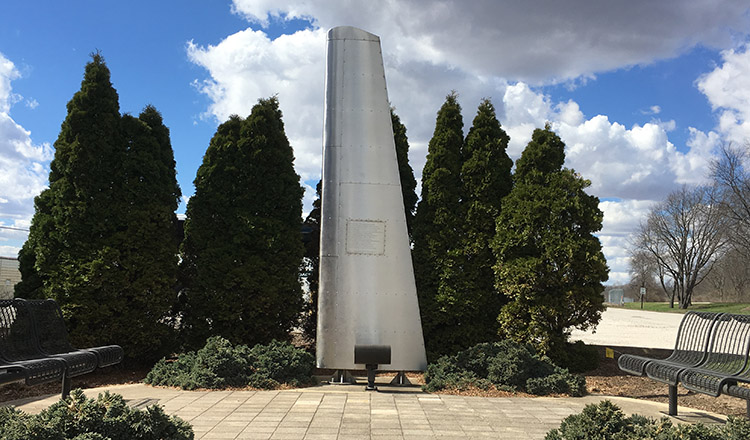It’s been nearly 20 years since two aviation technology students and their instructor — all experienced pilots — died in a plane crash at the Purdue Airport, but Tom Carney (T’71, MS A’77, PhD S’84) recalls the morning of September 12, 1997, vividly. Carney was one of two administrators who waited near the crash site for hours until emergency crews were able to remove the fallen aviators from the wreckage on what he calls “the longest and saddest day of my life.”
The deaths of Anthony Kinkade, 21, Julie Swengel, 21, and Jeremy Sanborn (T’95), 24, devastated the close-knit department. “A special bond connects everyone who’s experienced the gift of flight,” says Carney, who was associate department head of aviation technology at the time. “There was an immediate desire to honor the memory of those who lost their lives while preparing for their profession.”
Susan Hutson, a university architect serving as project manager for the construction of the Holleman-Niswonger Simulator Center, proposed installing a meditation circle anchored by an aircraft wing sculpture in front of the building. The entire memorial was constructed by students, faculty, and staff — from fabricating the airfoil to planting the greenery. “This landmark represents the heart and soul of the aviation technology department,” says Hutson. “It was a wonderful, collaborative effort.”
Verses of “High Flight,” penned by WWII fighter pilot John Gillespie Magee Jr. just a few months before he died in a mid-air collision at age 19, are engraved upon the sculpture. The poem begins with the line “Oh, I have slipped the surly bonds of earth,” and evokes the universal joy of flight.
“It’s something that is hard to understand unless you’ve experienced it,” says Carney. “Flying through the night with the Milky Way soaring above you or watching the sunrise from 41,000 feet … you witness incredible beauty and gain a deep sense of where you are in the cosmos.
“There’s a saying among pilots that we all have to ‘fly west’ at some point,” says Carney. The aviation memorial stands in lasting tribute to those pilots who made that westward journey before their time.

